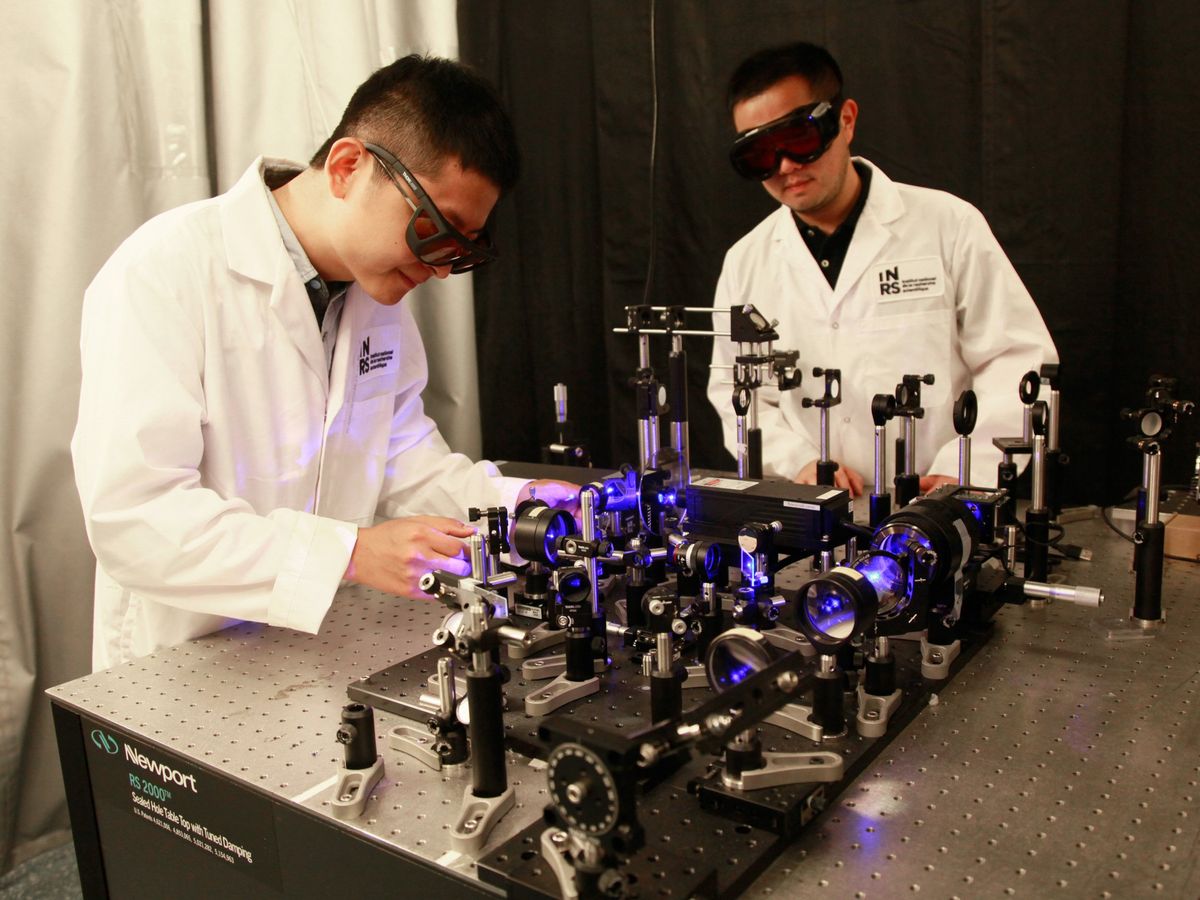High-speed digital imaging is more than about taking photographs very fast. It can capture events that happen in a fraction of a second, and too fast for the human eye to glimpse. Ultrafast photography has applications in motion tracking and analysis, security, and robotic vision, as well as in laboratories to see transient physical, chemical, or biological phenomena. However, high-speed cameras are often prohibitively expensive.
In search of a cost-effective alternative, Jinyang Liang, a researcher at the Institut National de la Recherche Scientifique, Québec, turned to optics. The result is a camera similar to a commercial ultrafast imaging device but costing less than a tenth of the price. Instead of an expensive specialized sensor like those found in commercial high-speed cameras, Liang’s team used off-the-shelf components to devise their prototype’s mechanism, which they termed diffraction-gated real-time ultrahigh-speed mapping, or DRUM.
DRUM photography uses the diffraction of light as a “time gate”—that is, to capture information about the event at different points in time. The researchers call this diffraction gating. Their camera can capture a dynamic event in real time at 4.8 million frames per second in a single exposure. Their findings were published in the 20 September issue of Optica.
Commercial high-speed cameras use specialized sensors to “see” a dynamic event by collecting light from the scene by a matrix of pixels, which when put together creates the image. Each pixel generates a charge proportional to the light falling on it, and the charges are temporarily stored in a series of registers before readout.
However, these ultrafast cameras come with downsides: They tend to have parallax errors, low sensitivity, and a likelihood of damage from pulsed illumination. Plus, the limited market for the specialized sensors makes prices prohibitive. “[Another drawback] is, you need to put many registers around the photosensitive area, which means the fill factor is actually very small, so [the camera] doesn’t have very high sensitivity,” Liang says.
The core device in DRUM photography is a digital micromirror device (DMD), which is also found in consumer electronics like projectors. DMDs have a two-dimensional array of hundreds of thousands of microscopic mirrors, each corresponding to a pixel. Each micromirror has two states: tilted toward the light (on) and away from it (off). The micromirrors can be quickly flipped between their on and off states electromechanically. “It’s basically a two-dimensional diffraction grating, and it’s programmable,” Liang says.
Diffraction grating is an optical element that separates light into its component wavelengths (not to be confused with diffraction gating, the mechanism behind DRUM photography). It generates multiple diffraction orders, based on the number of times that light is bent, resulting in replicas of the dynamic scene, Liang says. By using a fast transition time between the two micromirror orientations, and by sweeping the diffraction center across the orders of diffraction, the researchers created a time gate to extract sequential frames from the replicas. The selected frames were then synchronized with the camera exposure to form an ultrafast movie.

“We were seeing the same dynamic scene, but first we duplicated it into seven pieces,” Liang says. “Then, we tried to see different frames at different time points, from a different replica, and [finally], we put all of them together to get back the dynamic scene.” They were limited to a depth of seven frames by the wavelengths used and the size of the DMD. “We definitely want to go higher, and I believe we can by using different wavelengths and a larger micromirror size.”
In their prototype, the researchers integrated the optical elements with an ordinary CCD or CMOS camera (the types of cameras found in smartphones). “We don’t change anything, which means if this camera has high sensitivity, that is preserved,” Liang adds. Thus, along with the increased sensitivity, the DRUM mechanism results in performance comparable to that of conventional ultrafast cameras in terms of image speed, and how many frames can be captured. “And we are so much cheaper,” says Liang.
The researchers used the device to record bubble cavitation in distilled water, and the evolution of a plasma channel in response to a pulsed laser. They also photographed the laser ablation of onion cells. Liang foresees studying bubble dynamics to translate into new drug-delivery systems. Another possible application is developing new lidar systems, for which his team are working with Meta. “Because we can image fast…it should allow us to see the potential danger faster…[and] allow vehicles to make a correct decision on time,” he says.
The concept behind the DRUM mechanism, Liang says, is essentially “a novel way of how to use a digital micromirror device.” He acknowledges the multidisciplinary team behind this project, composed of optical physics, ultrahigh-speed imaging, and micro-electromechanical systems. The work built on a 2018 study coauthored by Liang, which used single-shot high-speed mapping photography to observe transient scenes in real time.
- Dynamic Vision Sensors Enable High-Speed Maneuvers With Robots ›
- High Resolution Sound Cameras Reveal Why Hummingbirds Hum ›
Payal Dhar (she/they) is a freelance journalist on science, technology, and society. They write about AI, cybersecurity, surveillance, space, online communities, games, and any shiny new technology that catches their eye. You can find and DM Payal on Twitter (@payaldhar).



